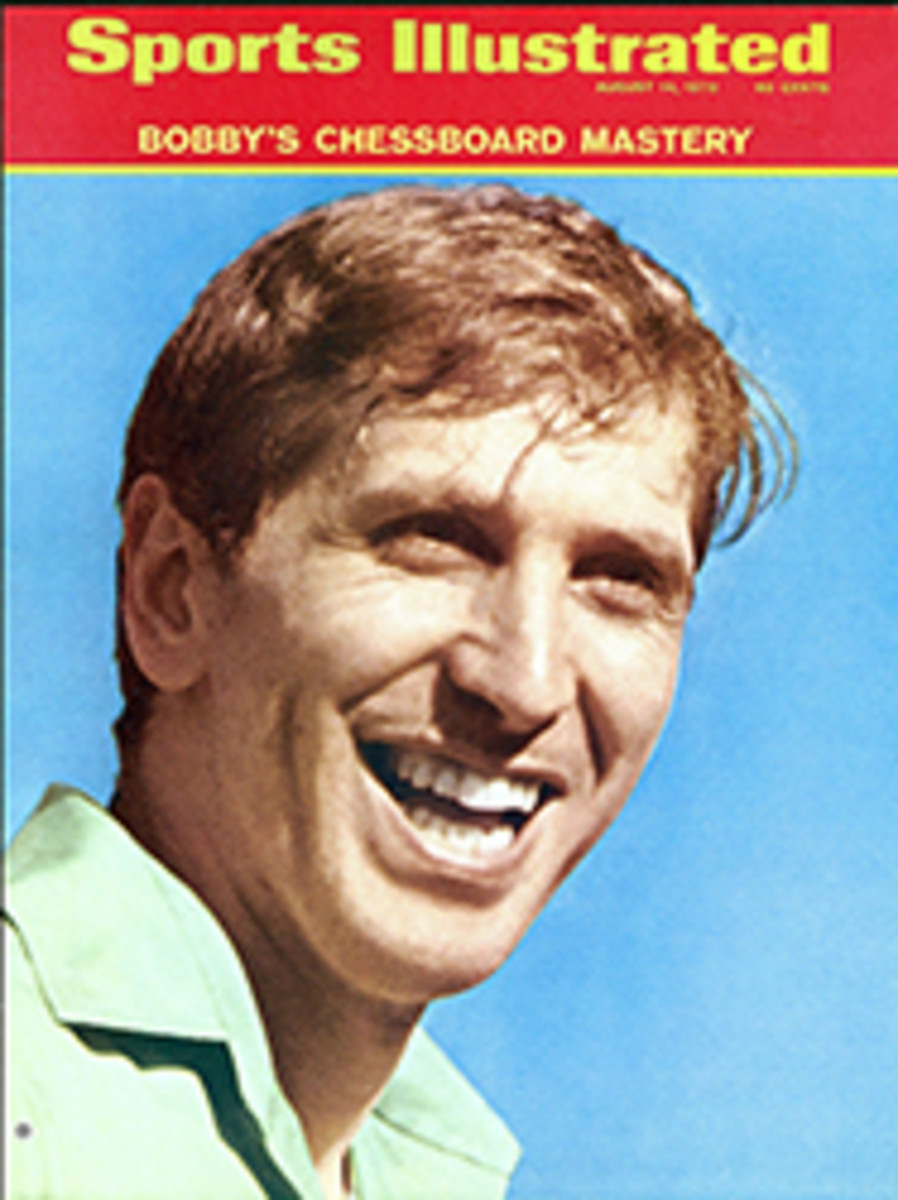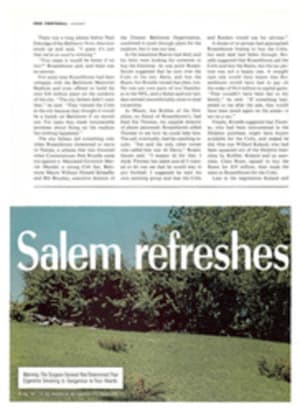
LETTER FROM THE PUBLISHER
In his book A Child of the Century, Ben Hecht describes the adventures of a pair of photographic bloodhounds for the old Chicago Evening American. Their job was to obtain hard-to-get pictures of criminals, victims and not-so-public figures who wanted to stay that way. Hecht's dauntless duo employed every artifice (including a glass eye that one of them would "lose" on cue to set up a diversion for his partner) and enjoyed huge success.
Like the old Evening American, SI has a pair of sleuths on its staff who locate the arcane, obscure or merely elusive photographs that help put the Illustrated in our title. Our picture hunters employ more orthodox methods than Hecht's odd couple, but they concede nothing in terms of success. And what Betty Dick and Dorothy Merz lack in eccentricity they more than make up for in doggedness and charm.
Sometimes their job involves finding not the right photograph but the right photographer, as for this week's story on athletes' wives. "Here were women who fought hard to maintain their identities in high-pressure situations," says Betty Dick, who made the photographic assignment. "I wanted to find a woman photographer who would relate to them, and after looking over several portfolios I decided on Catherine Ursillo." The soundness of her judgment is evident from the photographs beginning on page 70.
Dorothy Merz, who is a charter member of the SI staff, has been a picture prospector for most of her career. She has worked on seven magazines in all, including each of the Time Inc. publications. One detour took her for a time aboard a Spanish-language publication called Revista Semanal, which died an exquisite death in its lavish quarters in New York's Plaza Hotel. "We were living over our heads," Dorothy observes drolly. Betty Dick came to SI in the same year as Dorothy via FORTUNE, where she had worked for 12 years as a picture researcher—a job she viewed with trepidation until the art director gave her an "exam" that consisted of critiquing photographs in other publications and books.
Running to earth a specific photograph on short notice is often a matter of luck, though knowing where to look is a big help. The Merz-Dick team depends heavily on wire services and photo agencies, of course, but their more exotic safaris may take them to places like the Missouri Historical Society, where Betty finally located a picture from the 1904 Olympics to accompany William Johnson's recent series.
Occasionally the picture is available but the subject is unwilling. Dorothy recalls that obtaining a high school photograph of Lew Alcindor was one of her toughest chores. "I must have called his home and high school 100 times before somebody came through."
SI has provided the pair a liberal education in all phases of sport, but in the early days there were some colossal confusions. Betty spent several days back in 1954, for example, trying to track down a picture of a pacer named Johnny Globe—only to discover that in this case the pacer ran on four legs, not two. "I kept thinking of the runner who paced Roger Bannister to his sub-four-minute mile," she says.
Things have smoothed out a lot since then, and the Merz-Dick combo now functions with rare efficiency. Even without a glass eye.
PHOTO
DICK AND MERZ HOT ON THE TRAIL

